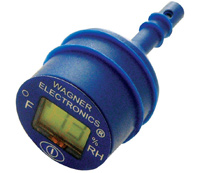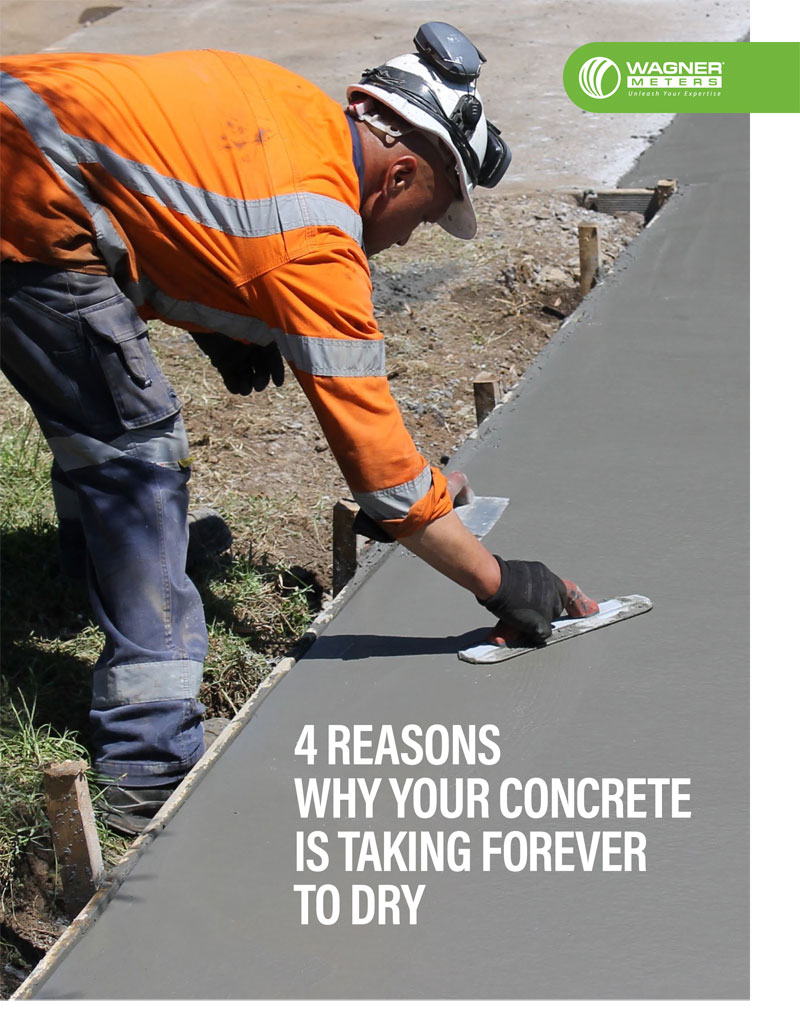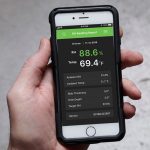The Rapid RH: Then and Now Concrete Moisture Measurement
When Wagner Meters brought its first prototype Rapid RH®, in situ probe to the World of Concrete trade show in 2005, it is probably safe to say that very few people there recognized the significance of the shift that was about to occur in the building and flooring industry’s moisture testing practices for concrete slabs. However, Wagner Meters had seen both the need and the opportunity for a scientifically proven and reliable concrete moisture test method.
“Wagner Meters began with a focus on wood moisture measurement,” recalls Ed Wagner, president and CEO of Wagner Meters. “For both primary forest products and wood flooring, our moisture measurement systems and handheld meters provided fast and accurate wood moisture content measurement.”
With an initial focus on systems for sawmills, the company eventually expanded into wood moisture measurement products for the wood flooring and woodworking industries as well. But it didn’t take too long for them to realize that part of many moisture-related problems in wood flooring were directly related to excess moisture in concrete subfloors.
“Any floor is composed of a number of layers,” points out Wagner, “and excess moisture from a concrete slab can and will cause flooring or adhesive failure over time.”
Wagner Meters eventually partnered with CTLGroup, a subsidiary of the Portland Cement Association, whose research had demonstrated not only the lack of a scientific basis for currently accepted moisture test methods like calcium chloride testing, but had also further developed research begun in Sweden that used embedded sensors to test the concrete slab’s internal relative humidity (RH) levels.
Their combined expertise eventually led to the Rapid RH®.
First Steps: The Rapid RH®
 “The first Rapid RH® unit,” shares Jason Spangler, Rapid RH® Sales Manager, “was a small unit that had all the technology–sensor, display, casing–in the unit body itself.” This initial design required a custom drill bit for installation and was not as cost-efficient as the Rapid RH® is today.
“The first Rapid RH® unit,” shares Jason Spangler, Rapid RH® Sales Manager, “was a small unit that had all the technology–sensor, display, casing–in the unit body itself.” This initial design required a custom drill bit for installation and was not as cost-efficient as the Rapid RH® is today.
“Add to that the fact that most industry professionals were not at all familiar with relative humidity testing, and that first trade show,” says Spangler, “meant people were watching but not committing.”
That was about to change when the very next year, 2006, the Rapid RH® not only caught the industry’s attention but won a Most Innovative Product (MIP) Award.
Great Gains: Smart Sensors and the Easy Reader
Where the initial Rapid RH® was unique was in the fact that the sensors were designed to stay in the concrete, not be removed and then require recalibration before each reading. “It’s important to note that the overall concept has never changed,” reminds Spangler. “The idea was to place the sensor at the correct depth and then seal it in.”
Once equilibrated, each reading was a matter of simply pushing a button and reading the required RH and temperature levels, which provided not only accurate readings but also significant savings in time.
Some revisions to the initial model made the Rapid RH® more cost-effective, and simpler to use as well as being compliant with the ASTM standard for this new test method.
“Where the changes occurred,” says Spangler, “was to separate the embedded sensor and the ‘reading’ technology of the unit.”
Enter the Rapid RH® Easy Reader, which still allowed quick and accurate RH testing, and also reduced the cost per test, making it much more competitive. As both Wagner Meters and CTLGroup worked to educate the industry on the strength of RH testing, people started to get on board.
“Obviously,” says Spangler, “people started to understand why it [RH testing] was so critical.” Flooring failures cost millions of dollars in damages each year, and the improved accuracy and effectiveness of RH testing had very practical benefits.
“The next big step in the Rapid RH® design,” recalls Spangler, “was in response to customer assessments of the Rapid RH®.”
There were three sticking points, says Spangler. “The initial Easy Reader did not have changeable batteries, it required a specific alignment with the sensor in the slab to take a reading, and it also required pushing a very small power button which, at times, proved challenging.”

Free Download – 4 Reasons Why Your Concrete Is Taking Forever to Dry
The redesigned Easy Reader, along with replaceable batteries, now features Touch-n-Sense™ technology, offering simple readings that automatically power on and are practically instantaneous in contact with an installed Smart Sensor, with no specific alignment required.
Easily moving from test hole to test hole, the Easy Reader allows fast, accurate, industry-compliant readings without re-equilibration time at each test hole.
Concrete Moisture Testing Today
Today’s Rapid RH® still offers the same fast, cost-effective, simple-to-use, industry-compliant RH testing as always.
The family of Rapid RH® products has grown to include digital pH meters, infrared IR thermometers, thermo-hygrometers, and the latest innovation, the DataMaster™ app with our Bluetooth® Smart Reader to protect data integrity and streamline ASTM F2170 reporting.
Along with this leap ahead in concrete moisture measurement technology, the DataMaster™ brought the Rapid RH® line of products full circle by winning another MIP Award at the 2013 World of Concrete trade show.
Constant innovation, research-based education, and industry-leading customer service are what have brought the Rapid RH® from its first trade show in 2005 to its place as an industry leader today. To learn more about the Rapid RH® family of products and how they can give you a solid advantage in concrete moisture measurement, click here.
Jason has 20+ years’ experience in sales and sales management in a spectrum of industries and has successfully launched a variety of products to the market, including the original Rapid RH® concrete moisture tests. He currently works with Wagner Meters as our Rapid RH® product sales manager.
Related Posts via Taxonomies
Last updated on August 31st, 2021




